What’s this Geneanet Ancestry Record Hint?
Show Notes: Have you seen records from Geneanet popping up in your Ancestry hints? Here’s the answer to a Premium Member’s questions about the Geneanet records she is seeing show up as Ancestry hints. Learn how to figure out what new record hints like this are and how to decide how much weight to give them.
Show Notes
Downloadable ad-free Show Notes handout (Premium Membership required. Learn more or become a member.)
I received the following question from Monete, a Premium Member: What is this new thing I’m seeing on Ancestry hints, Geneanet community trees? It’s a good question, and a common one. Genealogy websites like Ancestry are adding new record collections all the time. It’s important to know how to quickly understand what the new record collection is about, where it comes from, the scope and most importantly, decide how much weight to give it.
Records Included in Ancestry Hints
It’s important to note that not all records are included in Ancestry hints. Only 10% of Ancestry® records appear as hints. So we want to keep in mind that although we’re seeing lots of new hints for records, they aren’t by any stretch of the imagination all of the records in the Ancestry collection. Hints are made up of the most popular record collections. There’s always going to be a need to continue to do your own research and to explore other records.
Where to find Ancestry Hints
You’ll find hints in a variety of places such as:
- the leaf icon at the top of the screen near your account profile
- attached to ancestors in your family tree
- on ancestor profile pages
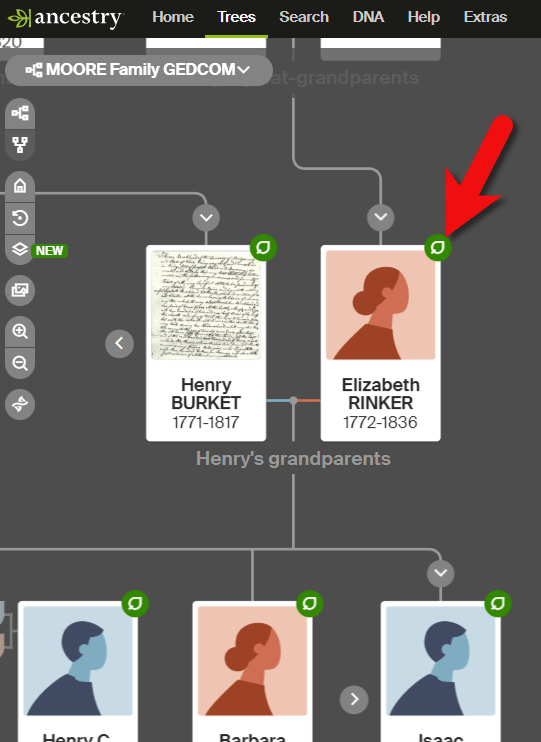
Ancestry hint in family tree
Reviewing and Comparing Ancestry Hint Information
View the hint by clicking the Review button. In the case of hints from the Geneanet Community Trees Index, you’ll see the pop-out panel prompting you to evaluate the record.
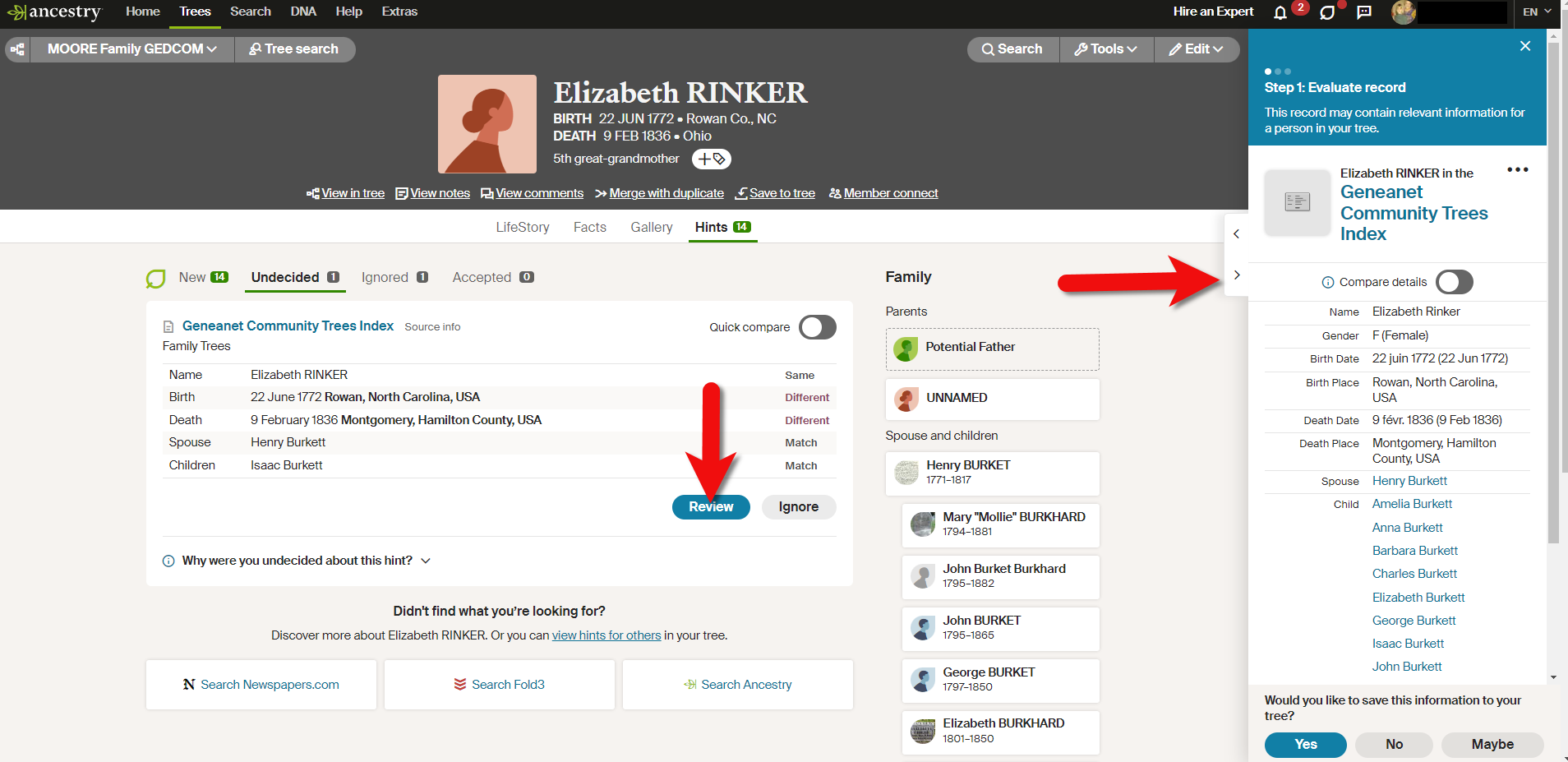
Click the Review button to reveal the side panel.
Compare the details of the hint to the known details in your ancestor’s profile by clicking the Compare Details slider button. This allows you to review and compare each piece of information.
In a case like this where we are unfamiliar with the record collection, it’s important to learn more about it before we compare and make decisions about the information. That way, as you evaluate each piece of information you are considering adding to your family tree, you will have a much better idea whether you trust the source, and you’ll be better able to interpret the information it is providing.
To learn more about the record, it’s a logical next step to click the hyperlinked record name at the top of the panel. However, in this case we notice it just brings up to a full-size page where we are again being prompted to review and add the information to our tree.
Use the Ancestry Card Catalog
When you run across something like this, the first thing to keep in mind is that this record collection they are referencing is obviously part of their total collection, which means we should be able to find it in the card catalog. That’s the best place on Ancestry to learn more about it. Copy the name of the record and then go the Card Catalog. You’ll find the Card Catalog in the menu under Search > Card Catalog. It can be helpful to access the Card Catalog in a new browser tab so that you can jump back and forth between the catalog entry and the record you’re reviewing. You can open it in a new tab by right-clicking on Card Catalog when selecting it from the Search menu.
The card catalog is something that we don’t think of using that often. But really, we should because this is where all the other records are that are not coming up in our hints are listed. It’s also a really terrific resource to tell us more about the record collections that we’re running into as we’re doing our research and evaluating our hints.
On the Card Catalog page, paste the name of the record collection that you copied in the Title search box. If for any reason it doesn’t come up right away, try typing just the keywords into either the Title box or the Keywords search box.
You should see the collection in the search result. When you hover over the collection title it tells you when it was published, if it was recently updated, and the beginning sentences of the collection description. You will see what type of record it is by the category in which Ancestry placed it, and get a sense of the size of the collection.
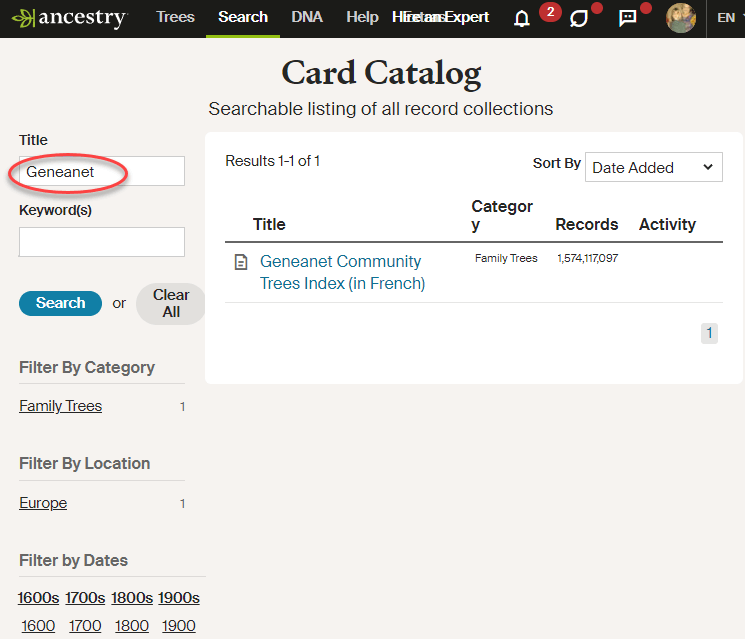
Searching the name of the record collection in the Ancestry Card Catalog
In the case of Geneanet, the category is family trees. So, without knowing anything more about it, we would expect this is probably user-contributed information, rather than, let’s say, a census record created by the government, or a birth record recorded by a pastor in a church. These family trees were created by many other genealogists. They may or may not include source citations or even be accurate.
Let’s learn even more about the collection. Click the title of the record collection. The next page will feature search fields and related records. Skip that for now and scroll down to the bottom of the page. This is where you really get to the heart of things about the collection. First you’ll see Source Information. Basically, this is saying Ancestry is the source (that’s where you found the hint) and Ancestry got it from Geneanet.
Next you’ll see the About section. This will help us determine the original purpose of the collection, how it was created, and so on. The About section tells us that this is an online database. And it tells the original data came from the Geneanet Community Trees Index in Paris, France.
Next you’ll find Using this Collection which provides an overview of the kind of information you can expect to find in the records. Next is Collection in Context. This explains “Geneanet was created in 1996 as a way to connect genealogical resources. They use a unique, collaborative model to share family resources while building community. Genealogists, both amateur and professional, are connected with users and genealogical societies. Anyone may upload content.”
“Anyone may upload content” is the key phrase here. People add information to family trees for a variety of reasons. Sometimes they are just testing out a theory and they aren’t even sure it’s accurate. And many people copy and paste information from other people’s trees. All of this means that we can only use this information as clues, not as facts. We must do our own research and homework to find the records that back up the assertions made in the record. Family tree records if used unwisely could easily introduce errors into your family tree.
Finally, in the About section we find the Bibliography which includes a clickable link over to the original sources for these records: Geneanet. Take a moment to visit the site. You can also learn more by some quick googling. Typically, companies like this are going to be listed on Wikipedia pages as well. That’s a that’s a good place to get a basic summary about when was this company founded, find out when it was purchased by the big genealogy website, if it is currently active, and the main website link. All that kind of stuff we can typically find over in the right-hand kind of summary column on the Wikipedia page.
Using and Managing Ancestry Hints
Hints can be great clues, but they can also put rabbit holes in your genealogical path and derail your research goals. This hint might not be your top priority right now. It might not be the most important aspect of your ancestor’s life. Or it might be super interesting, and in that case you can go for it. But I encourage you not to get addicted to just responding to hints. It’s OK to put it on the back burner, leave the hint and don’t even deal with it. You can mark it Maybe and then come back to it later. But don’t let it sidetrack you from your research goals.
That’s the thing about genealogy. It is becoming more and more automated. Have you found that it just feels like it’s happening more and more on its own? It’s sort of being fed to us through the automation, the machine learning, that’s happening on these websites. However, first and foremost, we need to keep our brains engaged. We need to be the one who does the evaluation and ultimately makes the decision as to what we think is accurate about our ancestor and our family history.
In the case of Geneanet, Wikipedia tells us it was created in France and ultimately was acquired by Ancestry in August 2021. We saw on the Card Catalog entry that the index was published on Ancestry in 2022. So, we are looking at information coming from an index. We’re not looking at the actual record. These records are housed on the Geneanet website. You can access the actual record by clicking the View on Geneanet link on the Ancestry record hint page
Resources:
- Downloadable ad-free Show Notes handout (Premium Membership required. Learn more or become a member.)
- Ancestry Top Tips and Hot Keys (video and show notes) Premium content
- Provenance: The Story Behind Your Genealogy Records (video and show notes)
- Source Citations for Genealogy (video and show notes)

Click to learn more about Genealogy Gems Premium Membership.
Forensic Genealogy: Beyond the Golden State Killer Case
The Golden State killer DNA-credited arrest was just the beginning. Another cold case—a double murder—has new answers thanks to forensic genealogy research techniques and a company that helps criminal investigators use them. Though legal and privacy questions still...Genealogy Gems Podcast Episode 238
The Genealogy Gems Podcast is the leading genealogy and family history show. Launched in 2007, the show is hosted by genealogy author, keynote presenter, and video producer Lisa Louise Cooke. The podcast features genealogy news, interviews, stories and how-to instruction. It can be found in all major podcasting directories, or download the exclusive Genealogy Gems Podcast app to listen to all the episodes and receive bonus content.
Click below to listen to this episode:
Podcast host: Lisa Louise Cooke
February 2020
Download the episode mp3
Do you love genealogy, mysteries and puzzle solving? Well in this episode we have not one but two tales of mystery.
The first has a Valentine’s theme centered around a mysterious love letter. Professional genealogist Kathleen Ackerman will be here to share how a love letter that was missing its last page took her on a genealogical journey full of surprises.
Our second story is a mystery full of twists, turns and murder that will ultimately resurrect your faith that what you think is lost, may still be found.
Genealogy News
Ancestry Lays off 6 Percent of Employees due to Consumer Slump
23andMe laid off 100 employees due to slowing DNA kit sales
Genealogy Gems Mailbox

Emails from Genealogy Gems Podcast listeners.
Frank recently wrote in saying that he listened to Genealogy Gems Podcast episode 227 and my conversation with Ran Snir, MyHeritage DNA Product Manager about their genetic genealogy tools The Theory of Family Relativity™ and AutoClusters. This got him thinking about his own test results and a frustration he has had trying to find matches and records in pursuit of this Galician roots.
Frank writes:
“Ancestry’s records are almost non-existent, except for some parish records, but this is the region from which Cuba and Argentina were populated, and the ultimate ancestry of Cubans in the US. I have done the AncestryDNA test but my matches are few and far between.
On the other hand, I have worked with a Spanish genealogist and have some records that go back to the 17th century. Is there any program like Ancestry, 23andme, or My Heritage, that can do Galician (Spanish) genealogy well.”
Regarding DNA matches and testing pools:
DNA companies test all types of people and because testers can download their results and upload them to other companies, their pools of people are becoming more similar. Generally, they don’t focus on particular groups. They just report the results based on the pool they currently have.
Regarding genealogy records:
Start with the FamilySearch Wiki page on Galicia includes links to records within each province.
Conduct a Google Search: Galician (Spanish) genealogy “Galicia”. Click here to see the Google search results.
Additional Resources:
The Genealogist’s Google Toolbox Third Edition by Lisa Louise Cooke available in the Genealogy Gems Store.
Lisa’s video classes and handouts on Google search are included in Genealogy Gems Premium Membership. Learn more here.
From Linda:
“I am a regular listener to your podcasts. And I am the family historian. I recently received a trove of documents from my Uncle who had been working to chart the family for 25 years. He passed away last year. His most recent quest was to find as many old family pictures as possible and I have continued to reach out to distant relatives. I enjoyed the recent podcast about the New York photographer website and hope it will help me identify people in some of these very old pictures.
(Episode 236 – Interview with David Lowe, Specialist for the Photography Collection at the New York Public Library on a free tool they provide that can help you identify your old photos. Also a discussion of how to find unindexed records at Ancestry.com.)
My question: a friend of mine has inherited all of her family’s old family pictures. The pictures are from the late 1800’s. She doesn’t know who most of the people are. She is not interested in learning and apparently there aren’t any members of the family who have taken the role of family historian. Is there anything to do with these pictures other than to dispose of them? It makes me sad to know that no one is interested. When I learned a branch of my family tree had tossed all of their old family pictures, I felt awful and it has taken me some time to accept that I might not ever find replacements for this branch.”
There are ways to make real progress identifying photos. I’m going to be covering more of this on upcoming episodes. I would start by asking your friend to write down states / counties / towns where she thinks her family lived, as well as her direct ancestors as far as she knows (even if it’s just grandparents or great grandparents.) With some basic genealogical info on the most recent members of the family and some possible locations, you could then post at least some of the photos on Deadfred.com.
This is a site where people search on families and locations and other identifying information to find unidentified photos of their family members. Many, many photos have made their way to family historians through DeadFred.
If you don’t have time to post them on DeadFred, and you do know the county where some of the photos came from, you could offer to donate them to the local genealogical society. They might be willing to take them, and their volunteers might be willing to do it.
I agree with you, it would be such a shame to toss them because you can be sure there is someone out there who would treasure them and may even hold answers.
 The free podcast is sponsored by MyHeritage
The free podcast is sponsored by MyHeritage
GEM: The Scrapbook Mystery
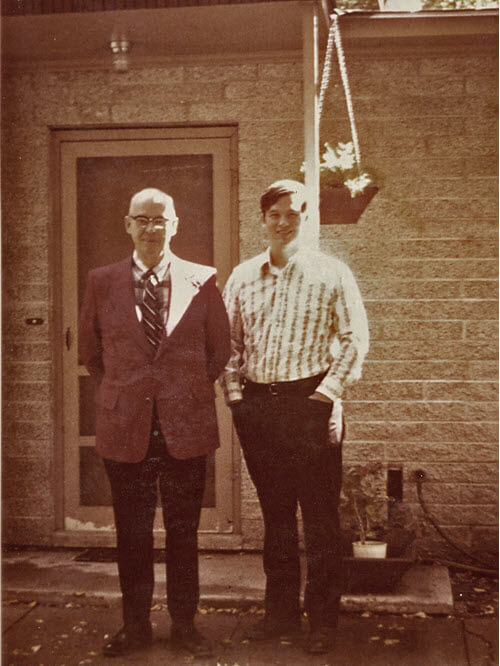
1973: Bill with his dad about six months before he died. (Courtesy of Bill Compton)
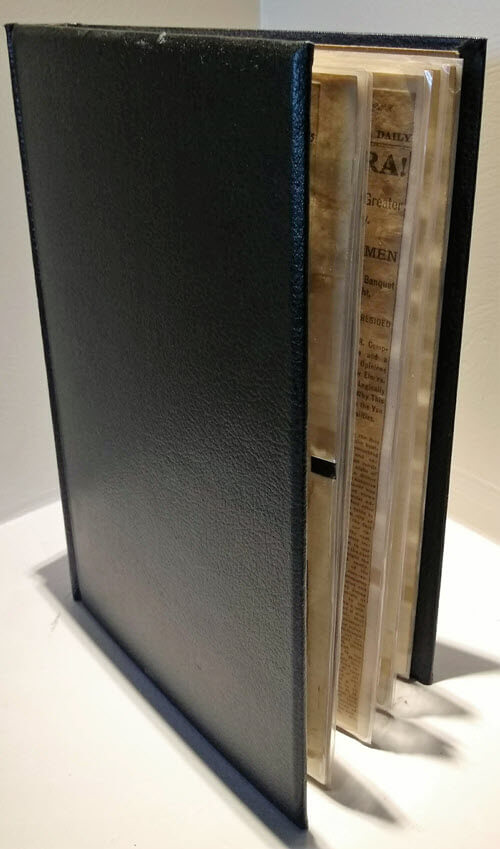
The Compton Scrapbook (courtesy of Bill Compton.)
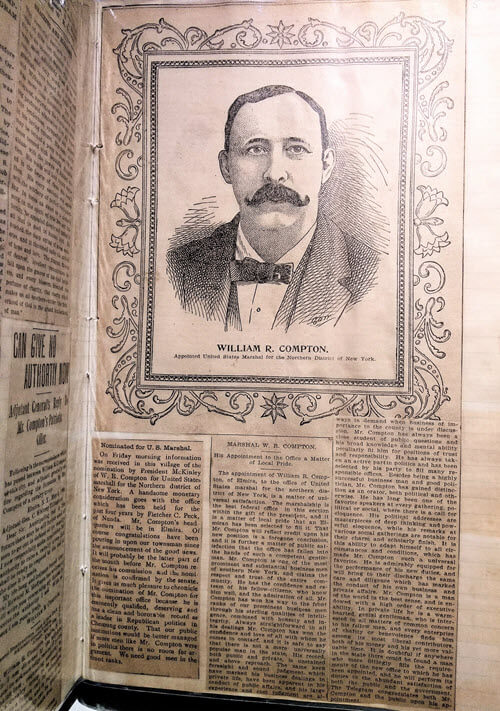
Article featuring William R. Compton in the Scrapbook (Courtesy of Bill Compton)
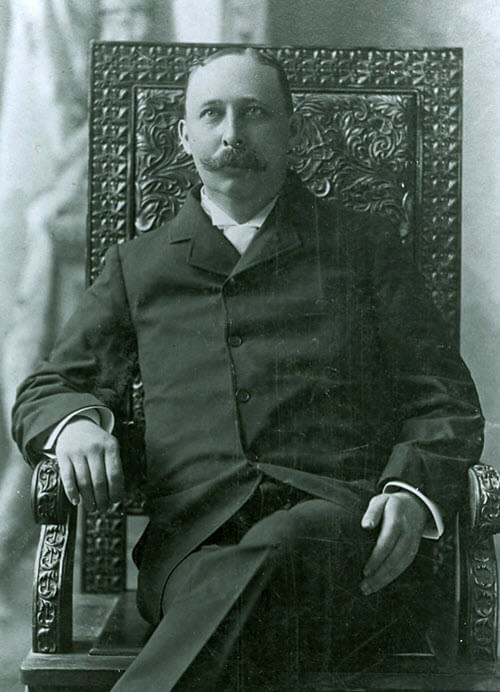
William R. Compton, US Marshall (Courtesy of Bill Compton)
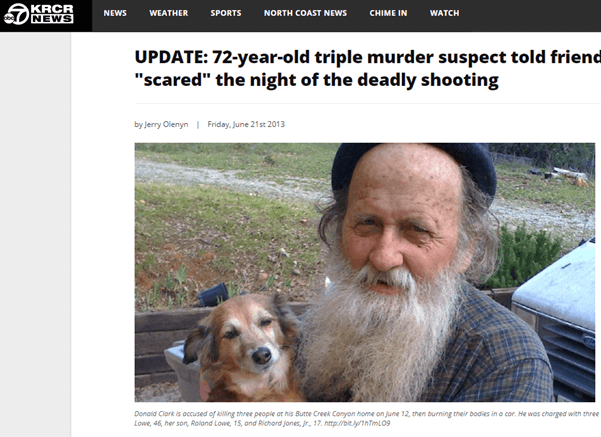
Donald Clark featured in the news
Read the news about the murder that occurred on the property where the scrapbook was found:Centerville Fire contained on property where triple murder suspect Donald Clark lived
Resources Discussed:
Learn more about how to blog about your family history. It may just lead to a treasure like it did for Bill. Here is a collection of articles at Genealogy Gems on family history blogging.
Learn more about how to set up your own blog by watching the videos on how to blog at my Genealogy Gems YouTube channel.
The free podcast is sponsored by RootsMagic
GEM: The Love Letter
Kathleen Ackerman graduated from Brigham Young University with a Bachelor of General Studies: Family History degree in April 2012. She now has her own research company, Finding Ties that Bind. She is also working on a Master’s Degree in Genealogy, Paleography and Heraldry from the University of Strathclyde in Scotland.
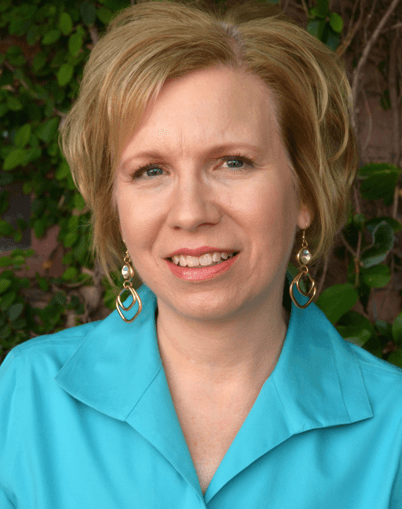
Kathleen Ackerman
Kathleen is the director for the Cave Creek Arizona Family History Center. She loves to help others as they learn about their family history. For seven years, she served as the Treasurer and British Institute Director for the International Society for British Genealogy and Family History. Besides her volunteer and school work, she spends most of her free time either working on her husband’s English and Scottish lines or playing with her granddaughter.
“In 2010, my mother found three pages of a letter addressed to “Mamie” among my grandparent’s things. My grandmother has passed away and my grandfather did not remember who Mamie was or why they had the letter. My mom sent me the letter in hopes that I could figure it out.”
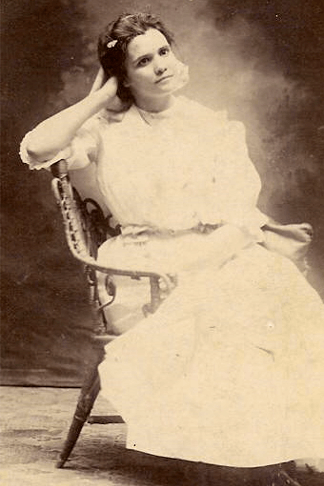
Miriam (Mamie) Smith Patelzick 1891-1911 (Photo courtesy of Kathleen Ackerman)
The last page which may have contained the writer’s signature was missing. This is where Kathleen’s search began.
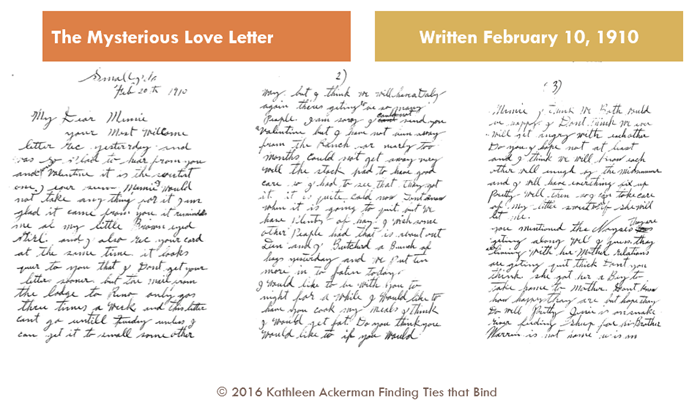
The first three pages of the love letter. (Courtesy of Kathleen Ackerman)
Kathleen turned to census records from the time period, and Google Maps to verify where Medicine Lodge was in comparison to Small, Idaho, the place from which the letter was sent. No such town could be found.
She then turned to old maps to see if the town had once existed. She used maps on the David Rumsey Historical Map Collection website. She found a map of Idaho from 1909, that showed Small, Medicine Lodge river and Reno (all mentioned in letter). They were all in Fremont County, Idaho. Her confidence that she had the right person grew.
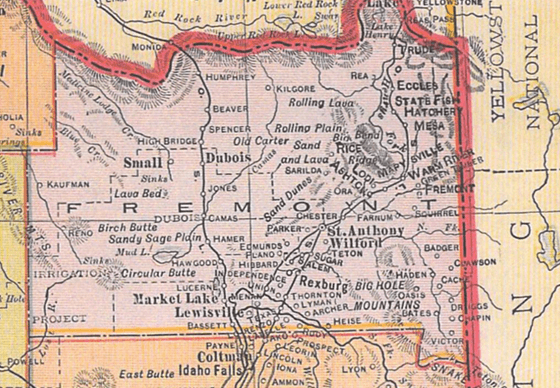
1909 Idaho map published by Geo. F. Cram, Chicago (DavidRumsey.com)
The search moved on into vital records. A marriage certificate for Mamie and William Patelzick in Dec 1910 was located.Perhaps they had eloped?
Spoiler Alert: If you haven’t listened to the episode yet. The next image reveals the writer of the letter.
Later, Kathleen’s mother surprisingly found the final page of the letter:
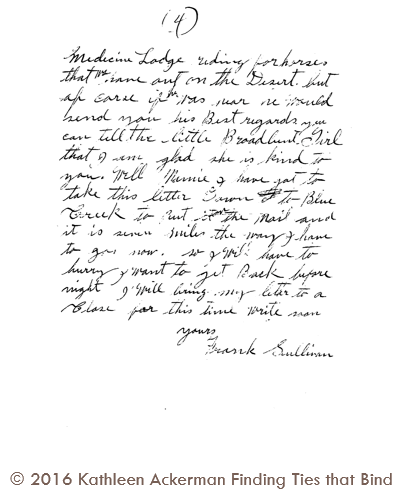
Found! The last page of the love letter. (Courtesy of Kathleen Ackerman)
A surprise indeed, and a mystery solved!
Thank you to Kathleen Ackerman for sharing her story! You can visit her at her website, Finding Ties that Bind.
Don’t wait another day. Get the computer backup that I use: www.backblaze.com/Lisa
Announcing the Next Generation of Google for Genealogy
The Genealogist’s Google Toolbox By Lisa Louise Cooke
Discover the answers to your family history mysteries using cutting-edge Google search strategies. A comprehensive resource for all of Google’s free tools, this easy-to-follow book provides the how-to information you need in plain English. You will first gain a strong foundation in how to search quickly and effectively. Then you’ll dig deeper into solving real-life challenges that genealogists regularly face. This book will show you how to flex your new Google muscles by mining each of the free tools to deliver satisfying and enlightening results. You will develop a mastery of Google that will serve you now and for years to come.
This book features:
- Step-by-step clear instructions and loads of images that help you easily follow along.
- Tips for searching faster and achieving better results to solve the real challenges that genealogists face.
- How to go beyond Google search by using the wide range of powerful free tools that Google offers.
- Cutting-edge technology like Google Earth to tell your family’s stories in new and exciting ways!
Download the Show Notes PDF in the Genealogy Gems Podcast app.




